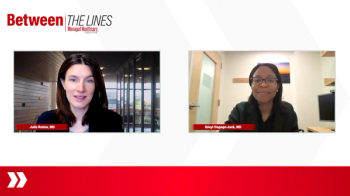
Payer Considerations Surrounding TRuE-V Studies
Drs. Owens and Rosmarin discuss payer and provider perspectives from the TRuE-V studies.
Episodes in this series

In the concluding segment of the video discussion on vitiligo, Gary Owens, M.D., and David Rosmarin, M.D., reflect on the evolving perspectives of payers regarding the condition. They highlight the shift in the understanding of vitiligo from being considered a cosmetic concern to being recognized as a chronic autoimmune disease that necessitates coverage. The introduction of ruxolitinib as a topical therapy for vitiligo in 2022 prompted payers to develop new policies, many of which now consider vitiligo as an autoimmune or immune disorder of the skin.
The experts discuss the significance of evidence-based collaboration between payers and providers in making policy decisions. They emphasize the responsibility of providers to use medicines responsibly, balancing the benefits for patients with the associated costs. The discussion stresses the importance of continued use of ruxolitinib beyond the initial treatment phases, highlighting its meaningful and sustained impact on patients, as evidenced by the TRuE-V primary study and long-term extension.
Dr. Rosmarin, one of the experts, acknowledges the encouraging shift in payer perspectives, with many now allowing ruxolitinib cream as a first-line treatment or after the use of corticosteroids or calcineurin inhibitors. He emphasizes the need for precise documentation, particularly regarding non-segmental vitiligo, which is the predominant type. The pair touch upon the relevance of real-world outcomes, suggesting the possibility of conducting further studies in the future to provide a comprehensive understanding of the long-term effects of ruxolitinib on patients with vitiligo.
The conversation underscores the importance of recognizing vitiligo as a legitimate medical condition, with the potential for significant impacts on patients’ quality of life. The experts express optimism about the evolving landscape of vitiligo treatment and emphasize the need for continued research and collaboration between stakeholders to ensure comprehensive and effective care for patients.
In their closing remarks, they express gratitude to the audience for their engagement and participation throughout the discussion, leaving the viewers with a sense of optimism for the future of vitiligo treatment and research. The experts encourage further exploration and research in the field to continue improving the understanding and management of the condition.
Video synopsis is AI-generated and reviewed by Managed Health Care Executive editorial staff.
Newsletter
Get the latest industry news, event updates, and more from Managed healthcare Executive.
















































